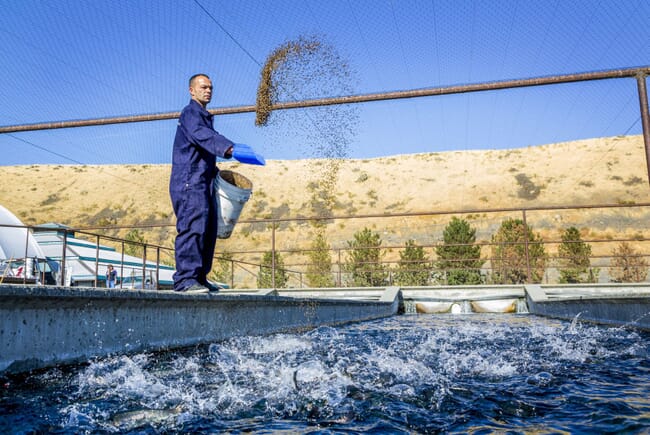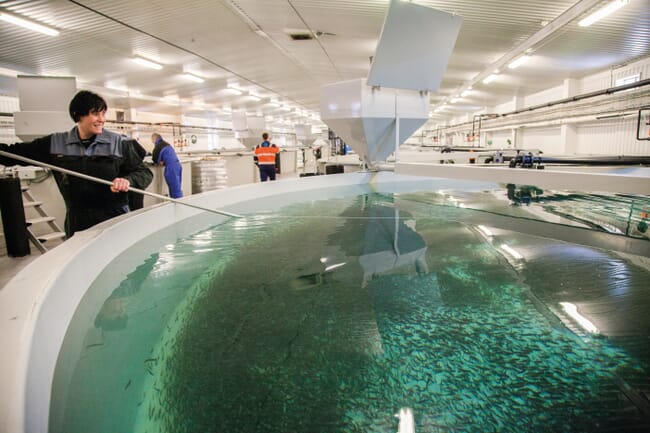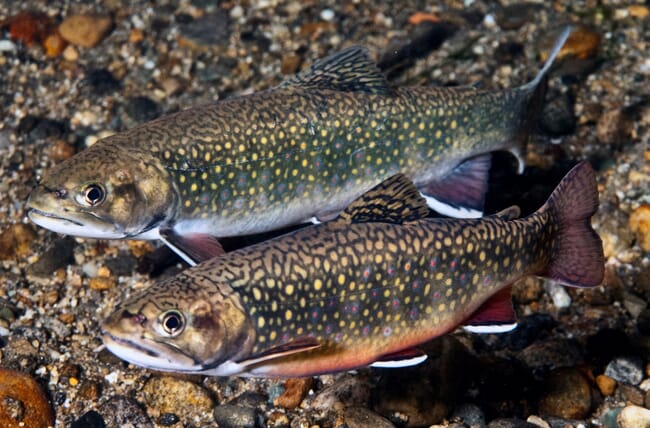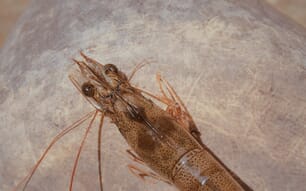
Creatine, an amino acid found in the muscle tissue of vertebrates, can serve as a valuable supplement in feed for aquaculture species © Hendrix Troutlodge
Creatine is an amino acid found in the muscle tissue of vertebrates. The compound facilitates the recycling of adenosine triphosphate (ATP) and thus contributes to the energy supply of the muscles and the brain.
Researchers from the Leibniz-Institute of Freshwater Ecology and Inland Fisheries and the Thünen Institute of Fisheries Ecology in Germany published a scientific review that brings together information on the many functions of creatine, as well as its physiological effects on fish, and potential beneficial effects as a supplement in aquaculture are highlighted.
The role of creatine in fish nutrition
To date, little is known about the use of creatine as a supplement in fish nutrition. But due to its many physiological functions, creatine can serve as a valuable supplement in feed for aquaculture species.
In fish, the creatine content per body weight is up to five times higher, which is also attributed to a higher ratio of skeletal muscle to body weight in fish compared to terrestrial animals.
According to the authors of the study, creatine’s observed effects in humans and various terrestrial species indicates that its supplementation in fish is a promising field of research.
Using creatine in aquafeed
"Creatine supplementation could be beneficial for the culture of aquatic species, particularly with regard to carbohydrate utilisation and the adaptation of fish to modern farming systems and production cycles," the researchers say.
In fact, creatine plays a critical role in fish muscle and can help improve the performance of fish raised in aquaculture systems.
Creatine supplementation of fish feeds promotes muscle growth by increasing body mass, and has the potential to improve feed utilisation, particularly in plant-based diets.
Creatine also plays a role in osmoregulation when fish adapt to changes in salinity.

Creatine supplementation of fish feeds promotes muscle growth by increasing body mass, and has the potential to improve feed utilisation, particularly in plant-based diets © Alltech Coppens
The effects of the amino acid
Growth performance
One of the observed effects of creatine supplementation is an increase in body mass. In fish, several studies have reported an increase in growth performance.
In hybrid striped bass (Morone chrysops × Morone saxatilis) reared in freshwater, no improvement in growth or feed efficiency was observed; however, in fish transferred to brackish water, a slight increase in weight gain was recorded.
Aerobic endurance and anaerobic sprint
Sustained swimming in fish is driven by red muscle and is characterised by aerobic processes fuelled by glucose. Intense activity and exercising to exhaustion, by contrast, are driven primarily by white muscle, resulting in rapid anaerobic consumption of energy stores.

Supplementing juvenile trout diets with creatine led to improved swimming endurance in a fixed speed test
In rainbow trout (Oncorhynchus mykiss), a single tail flick is sufficient to decrease white muscle phosphocreatine content. When exercised juvenile rainbow trout were fed creatine supplements, endurance in a fixed speed test was increased.
Osmoregulation
In African catfish (Clarias gariepinus), creatine supplementation caused a decrease in humidity, indicating the osmoregulatory activity of the creatine molecule in plasma.
In hybrid striped bass transferred to higher salinity, increases in growth performance have been reported, suggesting that creatine supplementation energetically assisted in osmoregulation.
Product quality
Improving meat quality and overall product quality is hugely important for aquaculture producers, especially for high-value products like fish and shellfish.

Creatine supplementation stimulates protein synthesis and can lead to an improvement in the quality of the product for the consumer
The review found that creatine supplementation stimulates protein synthesis and can lead to an improvement in the quality of the product for the consumer.
Some studies addressed the possibility of manipulating parvalbumin, the main fish allergen, through creatine supplementation. However, no effects on protein level have been detected.
Creatine supplementation affects postmortem muscle pH in fish; while in freshwater-raised Pacific white shrimp, creatine supplementation led to more favourable product quality in terms of muscle hardness and chewiness. In contrast, increases in muscle fibre diameter can also have a negative impact on meat texture.
Key conclusions
Creatine has been successfully used in aquafeed supplementation to improve growth performance, physical performance and to support osmoregulation.
However, the effects on performance parameters (growth, feed efficiency, protein and lipid content) often show mixed results, which can be partially explained by species-specific responses to creatine supplementation. In many cases, the physiological mechanisms have not been studied – and require further review before getting the formal nod from the aquaculture sector.




